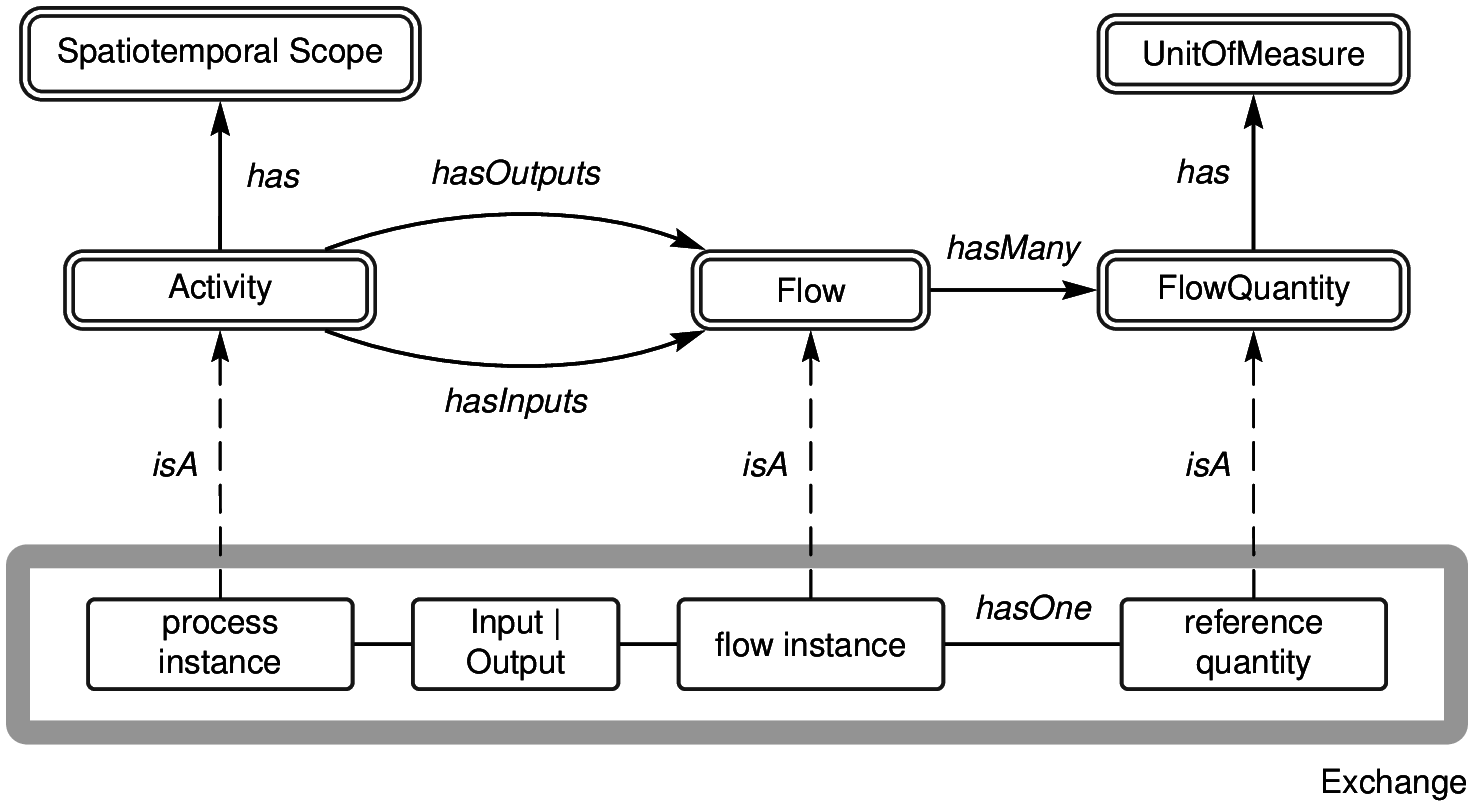Files that describe available LCA data resources
This is a repository for storing catalogs of life cycle inventory (LCI) data used for preparing life cycle assessment (LCA) studies. The catalogs are meant to describe the semantic content of the databases, as well as the network structure, without describing the quantitative information. In other words, the catalogs include exchanges but not exchange values.
All the catalogs here are generated from publicly available databases using the lcatools python package (not yet registered anywhere!)
Currently, the catalog includes archives of the following data sources:
- US LCI, via Ecospold v1 archive downloaded from the LCA Commons;
- Ecoinvent v3.2 (four different system models), via the "activity overview" spreadsheets available on the Ecoinvent website;
- GaBi Professional database (2014), via their web-based ILCD archive;
- ELCD 3.2, via their downloadable ILCD archive
Current plans include indexing the 2016 versions of GaBi Professional, GaBi Lean, and all 15-odd extension databases. Others may come soon.
The python programming language makes it very easy to work with JSON data. For a simple example of something useful to do, see this notebook.
The data model emphasizes minimality and generality. The unifying characteristic is the following minimal model for LCA, which is an attempt at synthesizing a number of published LCA data models into a common model with the fewest possible parts:
The model has three different entity types: processes, flows, and quantities. An exchange is a hybrid entity that consists of one process, one flow, and a direction (Input | Output) of the flow with respect to the process.
Each entity has three required fields:
- an entity type;
- an identifier;
- a reference object which is another entity
- a
quantityhas a referenceunit(units are outside the scope of this model) - a
flowhas a referencequantity - a
processhas a referenceexchange.
Although Strictly speaking the reference object is supposed to be required, in practice the reference object is allowed to be None/ null / empty.
In addition to the mandatory fields, each entity has an unbounded collection of tags which can be any text-based or numeric content that describes the entity. No tags are required but some are very useful and common:
- "Name" (common to all entities)
- "Comment" (common to all entities)
- "SpatialScope" and "TemporalScope" (all
processesin the catalogs have these)\ - "CasNumber" (many
flowshave these) - "UnitConversion" (some
quantitieshave these)
Entities can also have any other tag. The tags are meant to be fodder for search.
This repository contains archives and catalogs formatted as [[JSON]]. The JSON archivs have the following structure:
Archive = {
"processes" : [ <list of process entities> ],
"flows" : [ <list of flow entities> ],
"quantities": [ <list of quantity entities> ],
"exchanges": [ <list of exchanges> ],
"dataSourceReference": "a string describing where the archive comes from",
"dataSourceType": "a string describing the python subclass that created the archive"
}
Meanwhile, the entities themselves are simply defined:
quantities look like this:
quantity = {
"ReferenceUnit": unit-identifier,
"dataSetReference": quantity-identifier,
"entityType": "quantity",
"tags": {
"Name": "name text...",
...
}
}
flows look like this:
flow = {
"ReferenceQuantity": quantity-identifier,
"dataSetReference": flow-identifier,
"entityType": "flow",
"tags": {
"Name": "name text..."
"CasNumber": "...",
...
}
},
processes look like this:
process = {
"ReferenceExchange": "<Direction>: <flow-identifier>",
"dataSetReference": process-identifier
"entityType": "process",
"tags": {
"Name": "name text..."
"SpatialScope": "spatial text...",
"TemporalScope": "temporal text...",
....
}
}
And exchanges look like this:
exchange = {
"direction": "<direction>",
"flow": flow-identifier,
"process": process-identifier
}
In each case, the identifier listed in one entity's dataSetReference field should match the identifier listed in another entity's ReferenceEntity field.
<direction> is either Input or Output.
Within each archive, the dataSetReference fields should each uniquely identify an entity with respect to the dataSourceReference value, but interpretation varies depending on the archive type. For instance, if the dataSourceType is an IlcdArchive, then the dataSourceReference points to the root of the archive and the dataSetReference would be things like processes/<uuid> or flowproperties/<uuid>.
On the other hand, if the archive is an EcospoldV1Archive, then processes are identified by name, flows are identified by an internal ID integer, and quantities are just unit strings.
Finally, if the archive is an EcoinventSpreadsheet, then processes are UUIDs; flows are uniquely identified by name if they are intermediate flows, or uniquely identified by name, compartment, and subcompartment if they are elementary flows; and quantities are-- again-- just unit strings.
